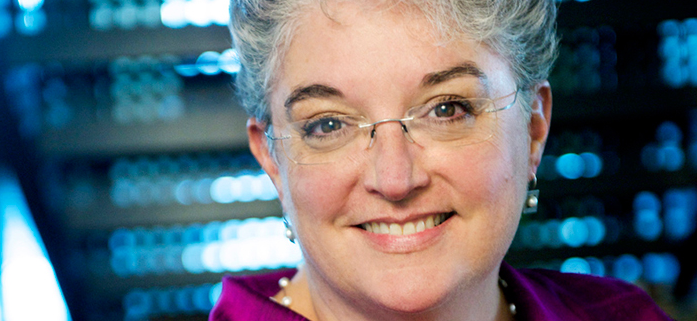Carole C. Wedge, FAIA, LEED AP, President of Shepley Bulfinch, was recently elected Chair of the AIA Large Firm Round Table, the first woman to hold the post since the LFRT’s founding in 1984. The LFRT is an independent entity representing 56 firms. Member firms must have a minimum of 150 staff members, at least 50 of whom must be registered architects who are also AIA members. LFRT member firms represent about 30,000 employees and $70 billion in annual construction value.
Wedge’s two –year term as LFRT chair began October 15. Following are highlights of a recent telephone interview with Wedge by Building Design+Construction Executive Editor Robert Cassidy.
On the role of the Large Firm Round Table: “It was started in the early 1980s, at a time when large firms were starting to emerge. It has evolved into an interesting peer group. The CEOs meet twice a year, and there are subgroups for legal, finance, sustainability, and so on to meet as peer groups. Technically, it’s independent from AIA, and there’s a separate membership fee, but the LFRT collaborates with the AIA, and we have common concerns. The AIA provides some administrative support for LFRT, and Bob Ivy [AIA CEO] or an AIA representative will come to our meetings.
“It’s a smaller group [than the AIA], kind of nimble, and focused on large firms and how we see the future.”
On the “big issues” facing LFRT member firms: “It’s thinking about the future, issues like technology, business practice, climate change, sustainability, and how they might affect the way we practice and how to explore the opportunities that [they present]. There’s a lot of discussion about how technology will change the way we work—for example, virtual reality and augmented reality—and trying to understand them as tools and how we can learn from them. That’s one area that we’re going to focus on, along with concerns like speed of production and prefabrication, flexibility, maker technologies, and robotic technologies, and what they will allow and how we can benefit from them. The Round Table is a good way to expose ourselves to those forces."
On day-to-day business concerns for LFRT members: “We’ve focused a lot on succession plans that make sense, how to empower young people to feel that they’re part of these large firms, which can sometimes feel impersonal. All of the member firms work hard to create a sense of a design community.”
On “Managing Uncertainty and Expectations in Design and Construction”: That’s the title of a report from the AIA Large Firm Round Table, in cooperation with the DBIA, the AGC, and AIA. “We wanted to have a dialogue around the complexity of these large-scale building projects. It’s a cross-industry research paper, and we interviewed owners and our partners [in construction] to see how we can work more effectively together.
“There are a lot of lessons learned about IPDs, contracts, contingencies around uncertainty, projects that want to go faster, the level of perfection that can be achieved when you’re going faster and faster. There’s concern about projects that find that they weren’t set up to handle uncertainty.”
On the LFRT’s October 12-16 meeting in Cuba: “It’s that one-on-one relationship where you develop friendships and learn from each other. It was framed as a cultural exchange, and we met a number of architects there, especially those concerned with preservation and restoration of significant sites. It’s important to appreciate that Cuba is older than the U.S., established in the 1500s, so a trip like that gives you a broader world view.
“Because Americans have not been able to go there, it was a reminder of how American my view is, whereas people from Canada and Europe have been there and see it as a vacation destination.
“There are many interesting contemporary 1950s buildings. It was great just being exposed to some beautiful buildings that you’ve never heard of."
Future U.S./Cuba architectural relations: “The U.S. design community would like to be helpful to Cuban designers. They say they don’t have the resources to do what they would like to do. There’s a lot of talent and intelligence there, and we all came away with a real appreciation for the talent in Cuba, and the quality of education they’ve achieved.”
LFRT’s biggest single concern: the state of the economy. “If the economy is doing well, the firms do well. But there’s global uncertainty, because our economies are so interlinked. The large firms have invested around the globe, with employees on the ground. A lot of uncertainties that we don’t control.
“There’s a lot of talk that we’re overdue for a recession. Also the stresses around business—talent shortages, business leadership development, where will the workforce in design come from and how do we inspire them."
What she worries about as President of Shepley Bulfinch: “It’s very similar— concerns about the economy, especially what the election means for healthcare. If we radically change the direction of healthcare, that will have an effect on our business. I think there will be a pause: people will need to take in the next few months, to think about these issues.”
On diversity in the design profession: “I do worry about making architecture a vibrant, well-compensated place for people, especially for women. We have to be diverse. It’s as important for white men to speak up for diversity as it is for women and people of color” [to do so].







